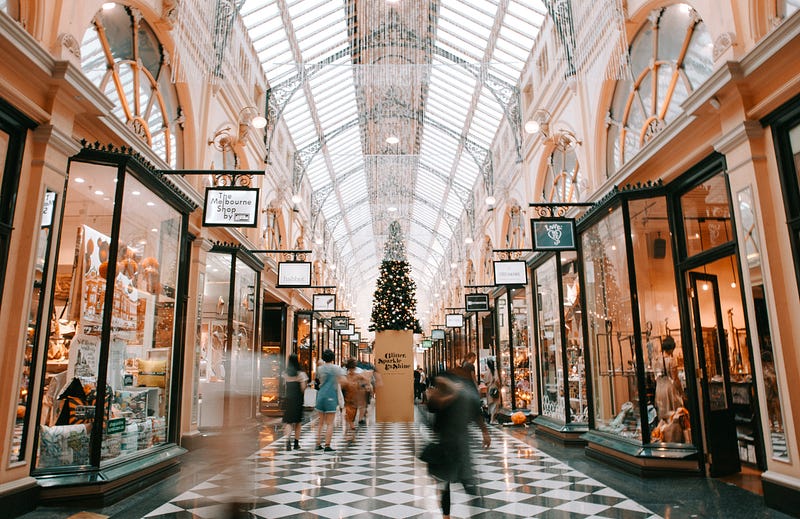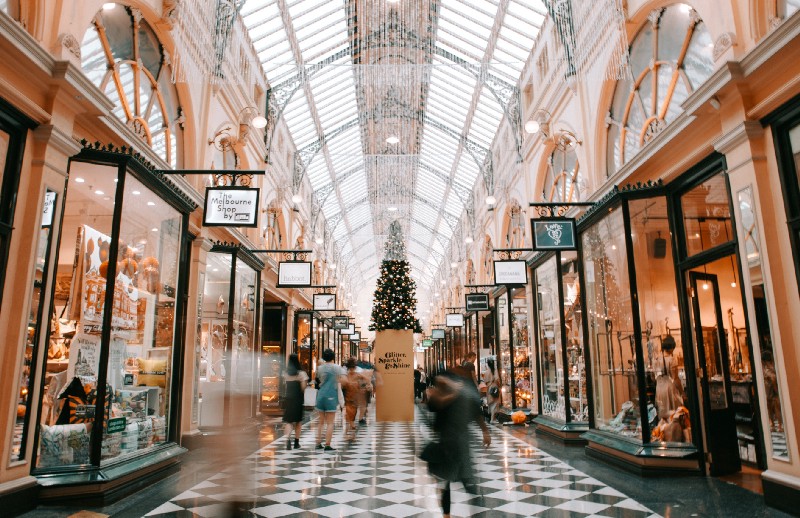After a great week at NRF talking tech with industry leaders about the future of retail, experiencing cutting-edge demos, and learning about retail’s biggest challenges and opportunities, we’re back in the office with a heightened appreciation for the exciting possibilities ahead.
In my last post, I announced our Retail Innovation Accelerator, which is focused on harnessing emergent technologies to develop customer solutions in an agile way. This retail solutions incubator — which is powered by internal innovation projects and strategic partnerships across voice & chat, telemetry & insights, and modern supply chain — provides a framework for our customers to more easily identify the technologies best suited to digitally transform their businesses.

This week, I’d like to switch gears a bit and discuss some of the trends we saw at NRF. While by no means an exhaustive list, I hope this helps paint the picture of how retailers should think about digital transformation efforts over the next year and beyond.
1. The whole is greater than the sum of its parts. One thing that stood out compared to past NRF Big Show’s is how technology companies are thinking about the power of multi-platform solutions. To unpack that, it’s becoming more and more evident that there isn’t one technology that can truly transform your retail and brand experience. Rather, a suite of technologies must be integrated into a cohesive, omni-channel strategy to really move the needle. If you are considering RFID sensors to make your dressing room “smart”, pair this with digital signage powered by a recommendation engine to help complete your customers’ outfit. Or how about taking that a step further with an AR-powered selfie app that shows customers what those boots would look like with their new dress? Individual technologies may generate some buzz, but the right suite of technologies can truly transform a retail business.
2. The year of the edge: connected everything. The best brands react to their customers in real-time, and the only way to do that is by listening smartly. The collection — and more importantly analysis — of data will continue to be one of the primary differentiators between successful and unsuccessful retailers. But how do you capture the kind of meaningful data that yields actionable insights? At Valence, we’ve been working in the IoT space for many years. However it was still eye-opening to see such a strong focus on the “connected everything” store. Edge devices and sensors are seeing exponential advancements in on-board compute power, connectivity, and battery life, while AI-powered cloud services continue to evolve. With technologies like computer vision, it’s amazing how much you can learn about yourself and your customers.
3. Retail robotics is maturing, but not there yet. We all know robotics in the warehouse is already here, but when will robots be roaming the sales floor? Can a robot re-stock shelves? How about provide wayfinding to a lost customer? We saw some compelling “front-of-house” demos from hardware and software companies alike, but at this time robotics still resonate best when tackling “back-of-house” challenges. However — as with all promising technologies — it’s only a matter of time until the cost-benefit ratio leads retailers to use robotics for more purposes.
4. Your platform is your product. While we used to only think of your platform — whether web site or store front — as the place to showcase your product, today’s competitive landscape means that your platform might just be your most important product. There are so many ways to buy, it’s important that yours is the easiest, fastest, and has a little extra flavor than the competitor. Improving your platform can be as simple as re-writing your web site copy to better match your brand’s voice, or can be as complex as restructuring your inventory management system and releasing a “buy online, pick up in-store” app. Whatever the approach may be, it’s important to understand how vital your platforms are in differentiating your brand.
5. Amplify your voice with…voice! It seems obvious, but in order to stay relevant brands must operate at the pace of consumers. And with the exponential evolution cycle in consumer technology, this is getting harder and harder to do. Voice may one day usurp touch as the primary user interface, and it’s important to consider the user flow for customers interacting with your brand on services like Amazon Alexa. We didn’t see as many voice-based demos at NRF as we expected…all the more reason to start investing in this space before your competitors do.
Next week, I’ll be providing a recap of everything we’ve learned and announced throughout our month of retail. I’m excited to share the opportunities on the horizon for all retailers who are ready to adopt emergent technologies.
JumpStart Your Future Retail Success
At Kopius, we’ve designed a program to JumpStart your customer, technology, and data success.
Our JumpStart program fast-tracks business results and platform solutions. Connect with us today to enhance your customer satisfaction through a data-driven approach, drive innovation through emerging technologies, and achieve competitive advantage.
Add our brainpower to your operation by contacting our team to JumpStart your business.
